| Phalaenopsis
mannii Rchb. f. in situ |
| |
| |
|
Phalaenopsis mannii Rchb.
f., was discovered in China, in Guangxi province, thus extending the
distribution of this species. It was previously known in China in
southern Yunnan, but also in Assam, in the eastern Himalayas, Nepal,
Myanmar and Vietnam.
It is in the beginning of the month of May that this species is in
bloom here, on a river side and growing under bright light. A large
number of plants were
find accompanied by other orchids like Cymbidium, Oberonia
and Thrixspermum but also by Hoya and ferns.
The Cymbidium visible in the pictures are Cymbidium
bicolor and the Hoya flowers
seems to be Hoya pottsii, this species being widespread in south of China.
All my thanks to Mr. Kyle Wong (orchidakai) for giving me permission to
use his photos here and sending me the informations that you can read.
You can see other great photos in his flicker account.
|
| |
|
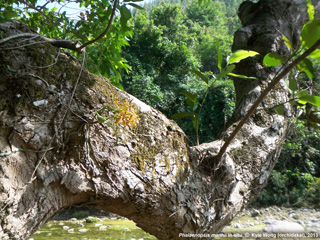 |
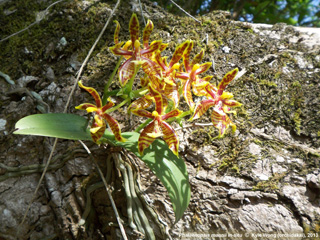 |
First discovery. In this overview,
the first Phalaenopsis mannii plant grows alone on the side of
a broad mossy branch, above a river. The fleshy roots are firmly
pressed against the host tree. What seems to be a line on the left side
of Phalaenopsis is a plant stem.
|
| |
|
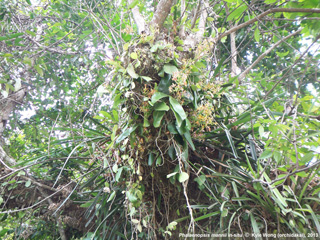 |
 |
Another location where plants are
now numerous and where you can see several generations of Phalaenopsis
mannii growing in the same place. The trunk was completely
colonized and is covered with epiphytes, some in bloom at the same time
that all those Phalaenopsis mannii visible here.
|
| |
|
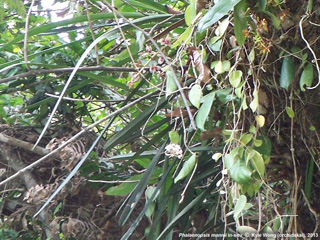 |
| Note the Hoya's umbel
with white flowers in the center of the above photo and upper flowers from Cymbidium
bicolor.
|
| |
|
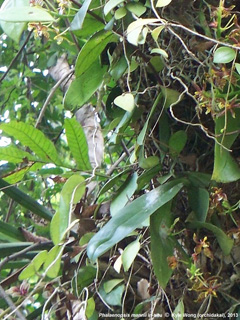 
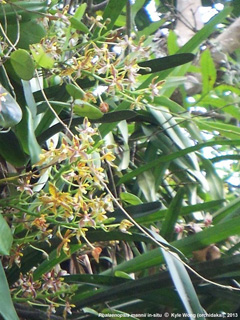 |
The above three photos are enlargements of the original photo, the fourth of this page.
You can notice the large number of flowers, some of which are fading
and some seems developing a pod. Note how healthy are all those plants!
|
| |
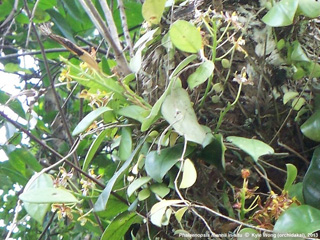 |
Notice
the dry flower stem from the flowering of the previous year. It starts
from the center of the picture and ends at the top left with a yellow
capsule and the remains of the pollinated flower. The capsule has now
started to rot but has released thousands of seeds when opening.
|
| |
|
| Clic on the
photos to enlarge them. |








